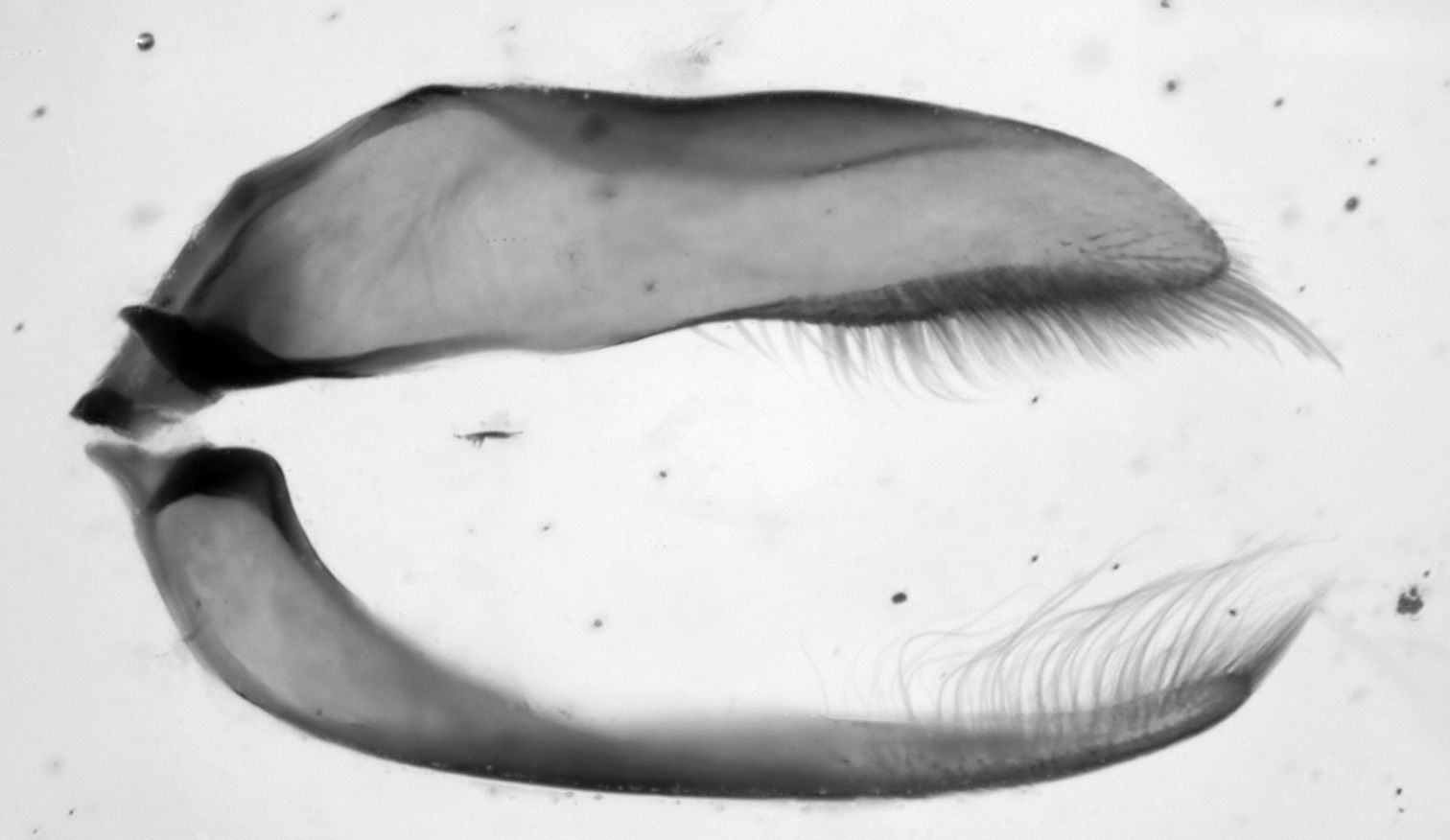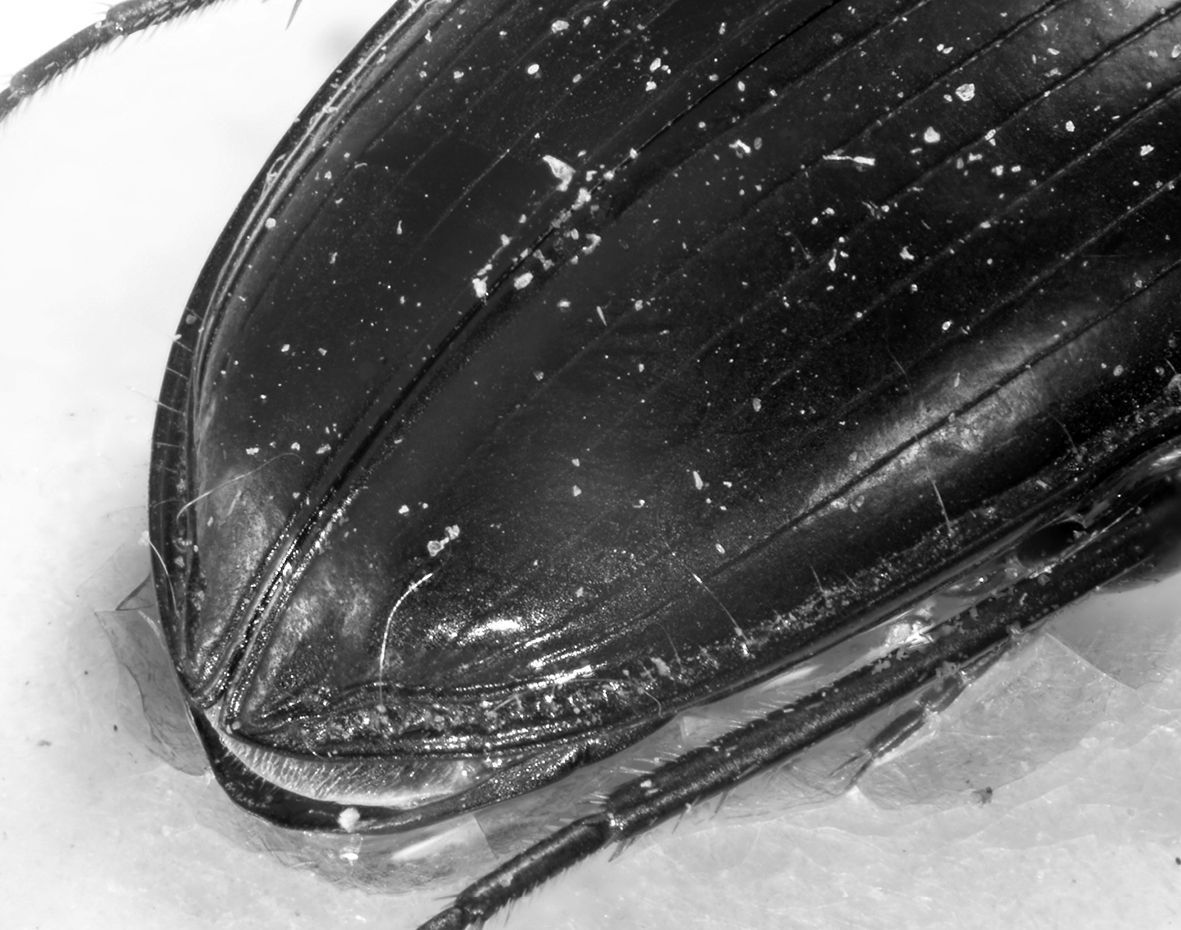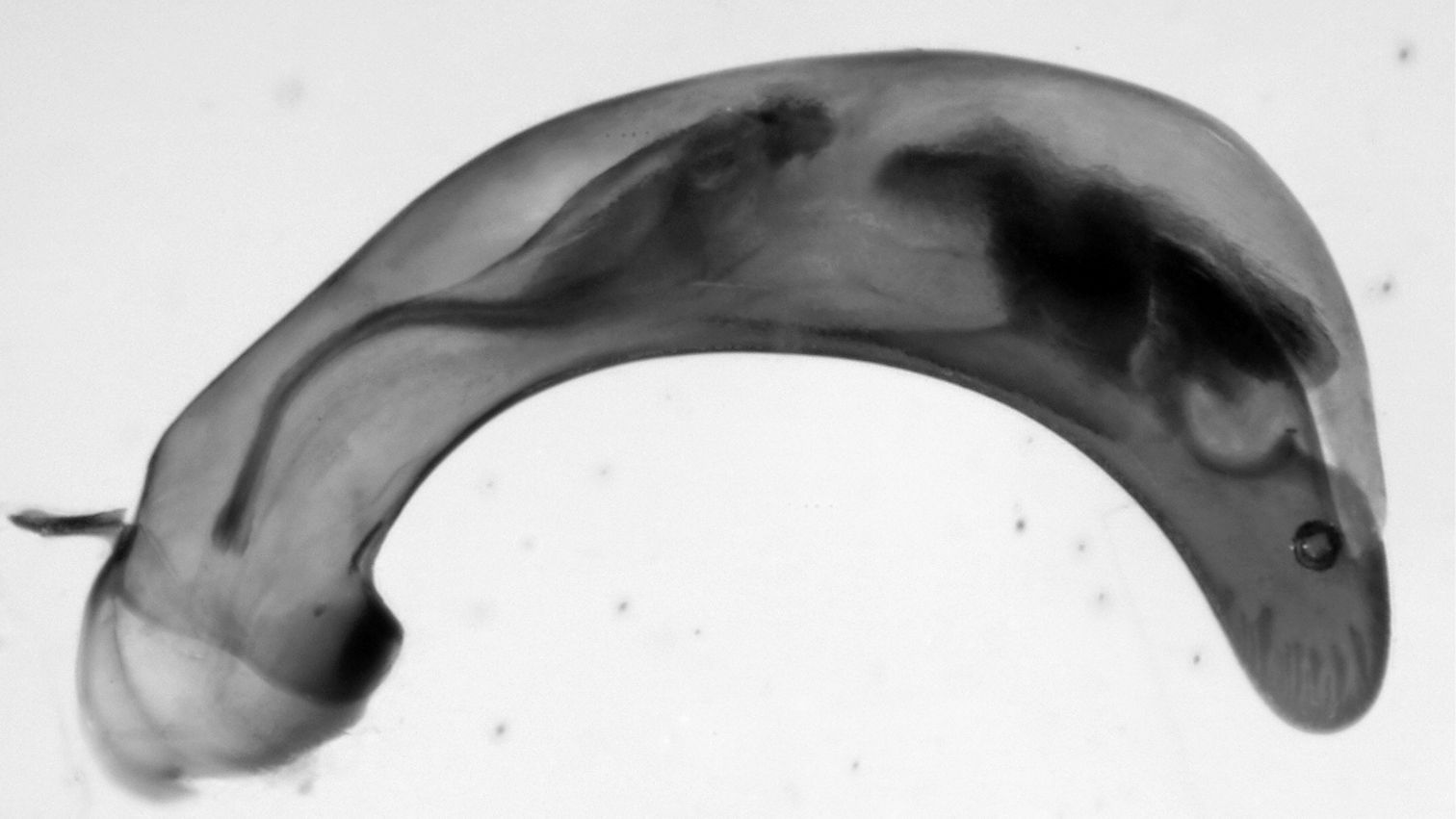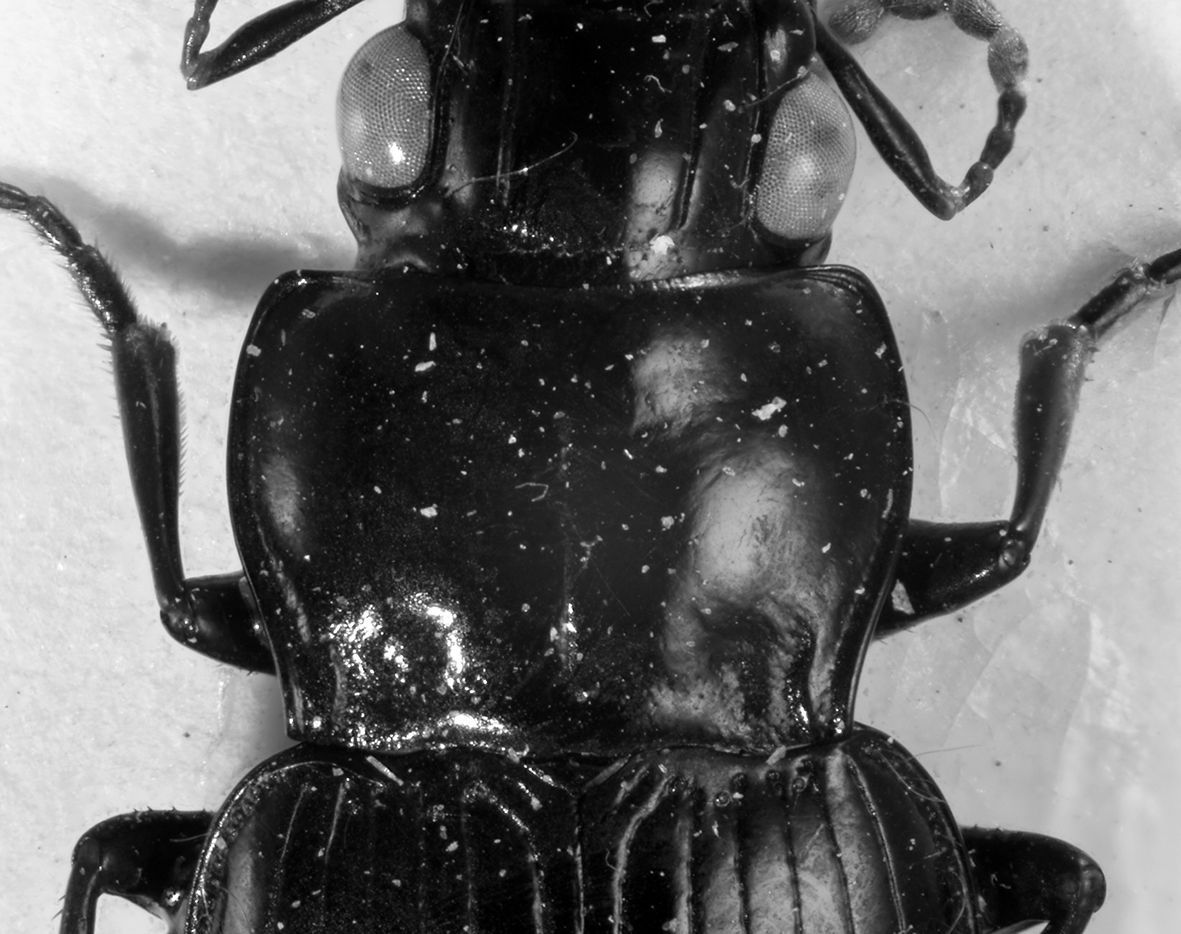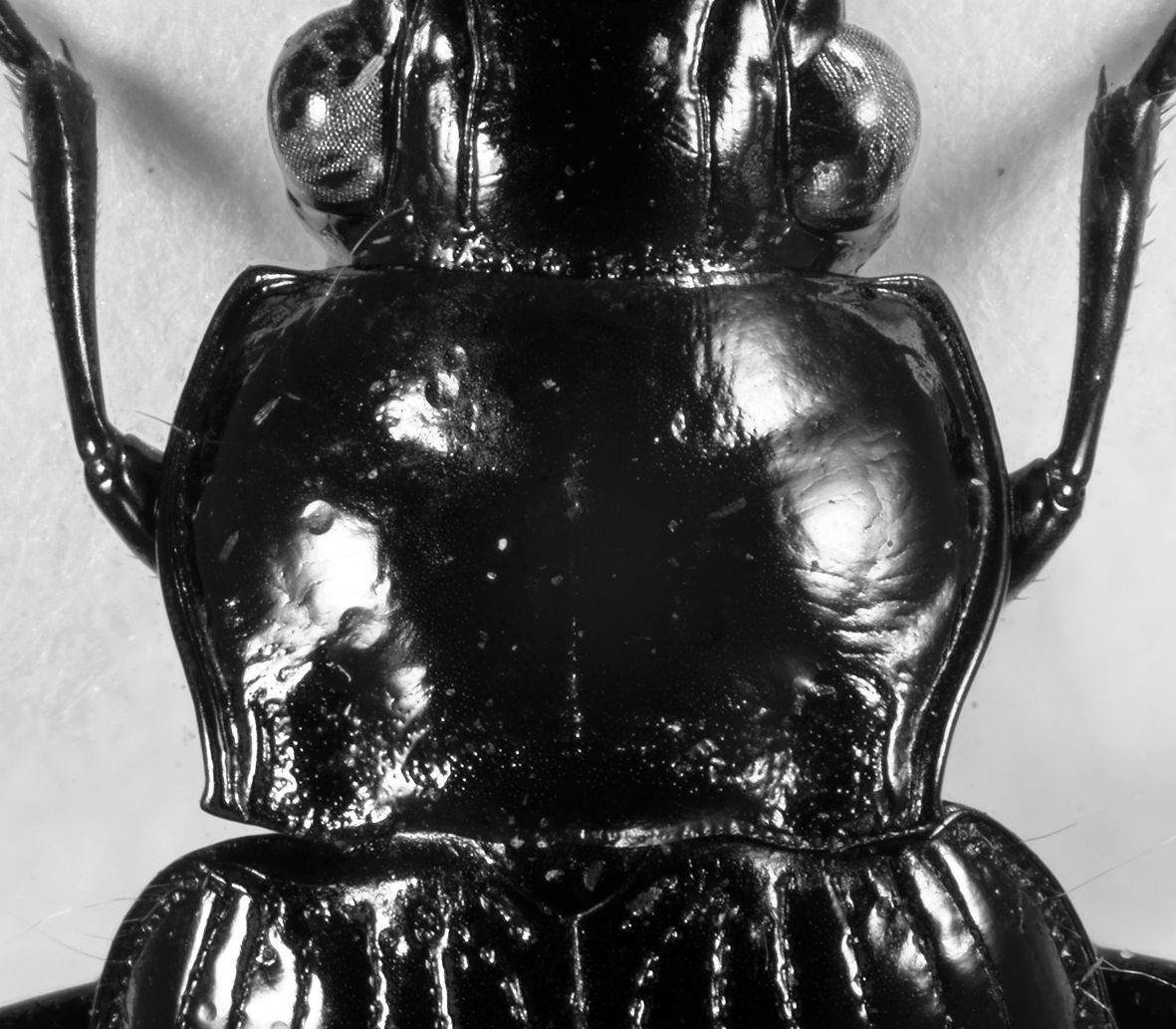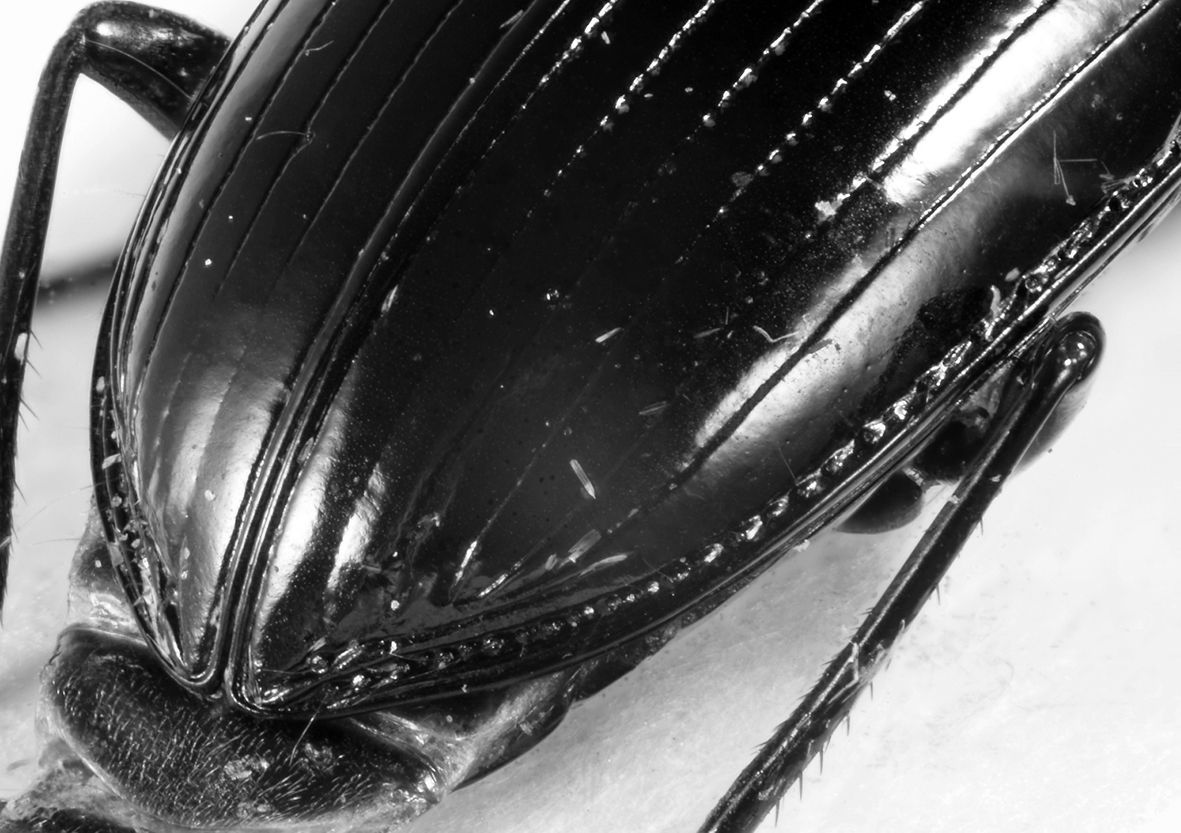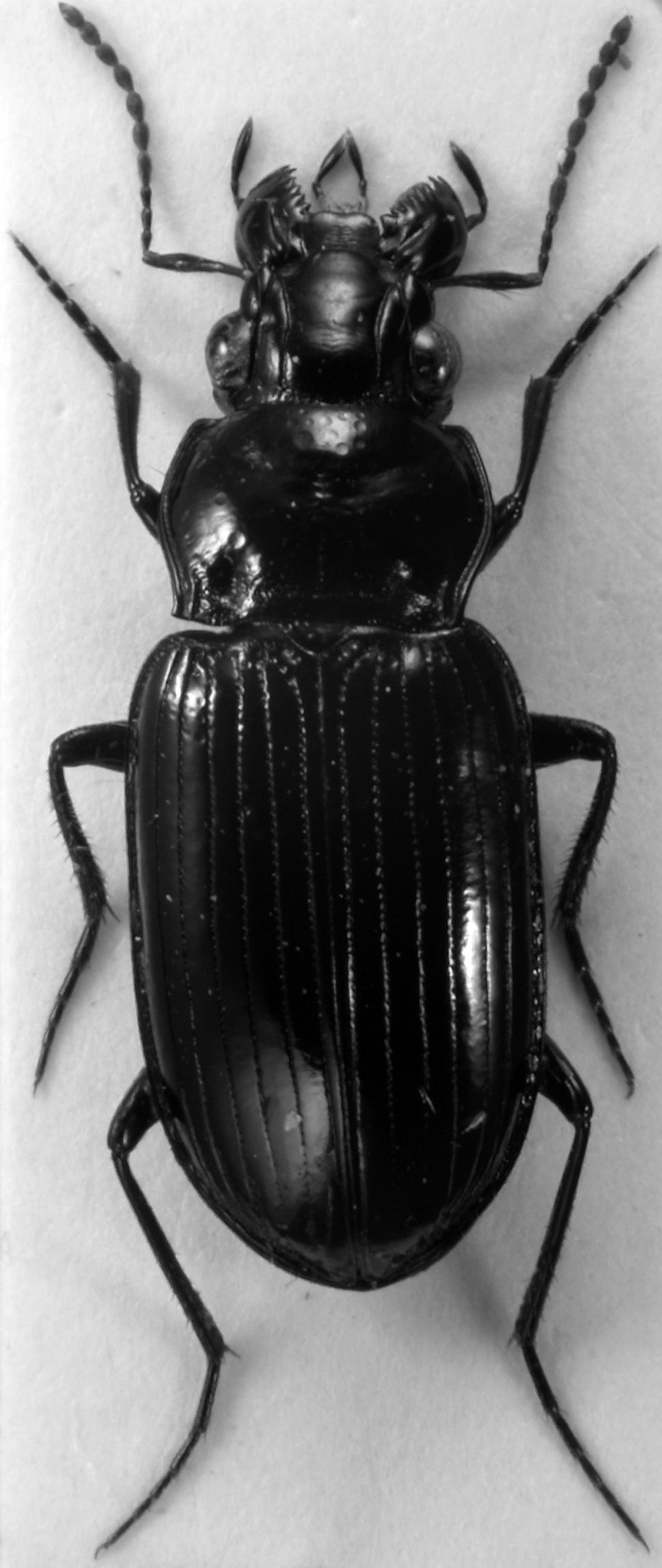(C) 2011 Thorsten Assmann. This is an open access article distributed under the terms of the Creative Commons Attribution License, which permits unrestricted use, distribution, and reproduction in any medium, provided the original author and source are credited.
For reference, use of the paginated PDF or printed version of this article is recommended.
Eucamaragnathus desenderi sp. n., a new ground beetle species of the tribe Hiletini, is described from eastern and southern Africa and dedicated to the recently deceased Belgian carabidologist Konjev Desender. The new taxon is known so far from localities in Zambia (Mukuku, southeast of Mansa) and in South Africa (Bothaville, south of Klerksdorp). The new species belongs to the Eucamaragnathus castelnaui group and is characterized by shape of pronotum, smooth or sparsely punctate pronotal transverse impression, characters of male genitalia and elytral striae continued to the apex. Illustrations of the habitus, the median lobe and its internal sac and several other morphological features are presented. An updated identification key to the African Eucamaragnathus species is given.
Coleoptera, Carabidae, Hiletini, new species, Zambia, South Africa, identification key
The pantropically distributed ground beetle tribe Hiletini is only poorly known, mainly because its members are rarely represented in collections. Erwin & Stork (1985) describe in their revision 20 species arrayed in two genera. Since that time no further species have been described.
Consequently we were surprised to find a series of an Eucamaragnathus species among other ground beetles caught by the Czech coleopterologists Miroslav Snižek and Vladimír Tichý in southern and eastern Africa. The examination of the material revealed that the specimens belong to a new species. Here we describe the species and dedicate it to our deceased colleague and friend Konjev Desender due to his exceptional engagement in the fields of ground beetle ecology, evolutionary biology and taxonomy.
MaterialThe material examined is housed in the collections listed below:
CAM - Collection of the Africa Museum, Tervuren, Belgium
CAS - Working collection Th. Assmann, Bleckede, Germany (type material will be given to Zoologische Staatssammlung München)
CFA - Working collection Sergio Faccini, Modena, Italy
CMA - Working collection Werner Marggi, Thun, Switzerland
CSH - Working collection P. Schnitter, Halle, Germany
CSS - Working collection P. Schüle, Stuttgart, Germany
CST - Working collection W. Starke, Warendorf, Germany (type material will be given to Westphalian Museum of Natural History, Münster, Germany)
CWR - Working collection D.W. Wrase, Berlin, Germany
MethodsMeasurements were made at a magnification between 12.5× and 50×, using an ocular micrometer in a Leica MZ 95 stereobinocular microscope. The following measurements are used in the description: Total body length is measured from the tip of the mandibles to the apex of the right elytron as the maximum linear distance; the width of the head (HW) as the maximum linear distance across the head, including the compound eyes; the length of the pronotum (PL) from the anterior to the posterior margin along the midline; the length of the elytra (EL) from the basal margin to the apex of the right elytron as the maximum linear distance; the maximum width of the pronotum (PW) and elytra (EW) at their broadest point; the width of the pronotal base (PBW) between the tip of the posterior angles; the width of the pronotal apex (PAW) between the tip of anterior angles.
Microsculpture was examined at a magnification of 100×Dissections were made using standard techniques;
genitalia were preserved in a mixture of polyvinylpyrrolidon, sorbitol
and glycerol on acetate labels (
urn:lsid:zoobank.org:act:7F180D34-C5F8-4D79-AC05-E2F727CAD2E3
Holotype male: „ZAMBIA NE. 2004 / 240 km SE Mansa / 25 km SE Mukuku / 29.11. Snižek, Tichý” (CAS). Paratypes: 13 males and 8 females, same as holotype (CAS, CFA, CST, CSH, CSS, CWR). 2 males and 4 females: „RSA, NW prov. 2001 / Klerksdorp, 20 km W / of Bothaville, Vaal riv. / M. Snižek lgt. 12.1.“ (CAS, CWR).
A macropterous species of average size for the Eucamaragnathus castelnaui group, black, pronotum transverse, sides sinuate with posterior angles acute, transverse anterior impression punctulate, transverse posterior impression strongly punctate, elytral striae continued to apex. Habitus see Fig. 1.
Eucamaragnathus desenderi sp. n., habitus; holotype.
Body length 8.8 – 10.6 mm; width 3.6 – 4.0 mm (holotype 10 mm and 3.8 mm, respectively).
Colour:Black, without iridescence, not metallic; mandibels, mouth-parts, antennae, and tarsi partly infuscate.
Head(Figs 1 and 2) large, about one fourth less wide than pronotum (HW: 2.0 – 2.4 mm, holotype: 2.3 mm; ratio HW/PW: 0.75 – 0.78). Eyes fairly large, their diameter (seen in dorsal view) about four tenth of head width; protected posteriorly by lateral extension of the cranium. Antennae robust, scape longer than the following 4 antennomeres, antennomeres 5 – 11 with dense and fairly fine setae. Mesal edge of mandibles markedly serrate (mandible teeth triangular shaped). Two pairs of supraorbital furrows. Frons not punctate, except basal close to pronotal anterior margin.
Eucamaragnathus desenderi sp. n., basal part of head, pronotum, basal part of elytra; holotype.
(Fig. 2) transverse (PW: 2.6 – 3.1 mm, holotype: 3.0 mm; PL: 1.9 – 2.2, holotype: 2.0 mm), widest prior to middle (basally of lateral seta). Pronotum at the base broader than at the apex (PAW: 2.2 – 2.6 mm, holotype: 2.5 mm; PBW: 2.3 – 2.8 mm, holotype: 2.7 mm). Anterior margin moderately straight; anterior angles pronounced, but rounded; lateral sides clearly sinuate; posterior angles acute, basal margin curved. Anterior transverse impression sparsely punctulate; lateral beads deep, not punctate; basal transverse impression deep, markedly punctate and connecting basal foveae; basal foveae deep, punctate and delimited externally by a keel-like carina without punctations.
Legs(Fig. 1) similar to those found in other Hiletini species. Males with small tooth on profemur. Single long guard seta of tarsus 5 much longer than claws. Males with spatulate adhesive setae beneath protarsi 1 – 3 and mesotarsus 1.
Elytra(Figs 1 and 3) with pronounced humeri, slightly enlarged to the end of the second third (EL: 4.8 – 5.9 mm, holotype: 5.75 mm; EW: 3.3 – 3.9 mm, holotype: 3.7 mm). Basal margin reduced, reaching 6th interval. Scutellar striae short; elytral striae deep and punctate, at the apex less impressed, but well visible; intervals flat, at the apex slightly convex. Discal setae of third stria in punctiform depressions.
Eucamaragnathus desenderi sp. n., apex of elytra; paratype.
with microsculpture of irregular and weak mesh patterns, meshes mainly transverse; a clear micropunctation on head, pronotum and elytra (20× magnification); surface shiny.
Male genitalia(Figs 4 and 5). Median lobe with ostium dextral. Both parameres multisetiferous, the setae of the narrow right paramere are longer than those of the broad left one.
Eucamaragnathus desenderi sp. n., male genitalia, left lateral aspect of median lobe (aedeagus); paratype.
Eucamaragnathus desenderi sp. n., male genitalia, ventral aspect of parameres; paratype.
Due to form of mandible teeth and long single guard seta of last tarsomere the new species belongs to the genus Eucamaragnathus
Jeannel, 1937. The small tooth of profemora in males, the dextral
position of the ostium of the aedeagus and elytral striae continued to
the apex place the new species in the Eucamaragnathus castelnaui (Bocandé, 1849) group (cf.
The new species is similar to Eucamaragnathus castelnaui and Eucamaragnathus fissipennis (Ancey, 1882). The best character to separate Eucamaragnathus desenderi sp. n. from the nominate species of the group is the shape of the pronotum and especially the weak punctation of the pronotal anterior impression which is markedly punctate in Eucamaragnathus castelnaui. In comparison to the other species of the group, Eucamaragnathus desenderi sp. n. has acute pronotal anterior angles, but they are less produced than in Eucamaragnathus oxygonus Chaudoir, 1861. Moreover the median lobe, especially its internal sac structures, of Eucamaragnathus desenderi sp. n. differs from all other species of the given group. From Eucamaragnathus fissipennis the new species can be easily distinguished by stronger punctation of posterior transverse impressions of pronotum (Figs 2 and 6), stronger punctation of elytral striae, which are weaker at the apex, but still well visible (Figs 3 and 7) and a microsculpture with stronger punctation.
Eucamaragnathus fissipennis, basal part of elytra.
From Eucamaragnathus bocandei (Alluaud, 1914), which forms an own species group, the new species differs by its strong punctation of pronotal posterior impression and from Eucamaragnathus suberbiei (Alluaud, 1914) it can be separated by the size of tooth on ventral surface of profemur in males.
For better distinction we present an identification key for the known members of the African Eucamaragnathus species (see below).
It gives us great pleasure to dedicate this
species to the memory of Konjev Desender, the well known Belgian
carabidologist who recently deceased. We had many scientific meetings,
excursions and productive collaborations with him, and we will honor
his memory. An obituary is given by
Up to now Eucamaragnathus desenderi
sp. n. is only known from the two sites in Zambia and South Africa. The
population from Zambia (close to the border to Congo) lies in the
tropical part of Africa fitting well to the main distribution area of
the tribe in tropical Africa. In contrast, Bothaville in South Africa,
the other site from where Eucamaragnathus desenderi
sp. n. is known, is located between the 27th and 28th degrees of
southern latitude, doubtless in the subtropical realm, and seems to be
the most southern known record of a Hiletini species in Africa (and worldwide). The wide distribution of Eucamaragnathus desenderi sp. n. in Africa is not unusual for a Hiletini species (cf. the large distribution areas of Hiletus alluaudi (Jeannel, 1937) and Eucamaragnathus fissipennis,
Eucamaragnathus desenderi sp. n. seems to co-occur with Eucamaragnathus fissipennis which is distributed in tropical East Africa and south-eastern Africa. Eucamaragnathus oxygonus is known only from one locality in South Africa. All other African species of the genus Eucamaragnathus show – so far known – an allopatric distribution (Eucamaragnathus suberbiei is an endemic of Madagascar, Eucamaragnathus castelnaui and Eucamaragnathus bocandei occur exclusively in tropical western Africa,
The specimens were caught at light and habitat preferences are therefore unknown. Together with the holotype of Eucamaragnathus desenderi sp. n., a single Hiletini specimen of Hiletus katanganus
Basilewsky, 1948 has been found. We compared this specimen of the
rarely recorded species with the type material preserved in the Africa
Museum (collection of Basilewsky) and detected morphological
differences. Without more material (especially males) it seems to be
impossible to assign specimens conclusively to this species (see also
the note in
This new identification key is based on the one presented by Erwin & Stork (1985), but it is modified and illustrated additionally.
| 1. | Elytral stria 2 not continued to the apex, ending just behind last discal seta (Fig. 7) | Eucamaragnathus fissipennis (Ancey, 1882) |
| – | Elytral striae 1 – 4 continued to apex (Fig. 3) | 2 |
| 2. | Pronotum with basal impression rugosely punctate. From continental Africa | 3 |
| – | Pronotum with basal impression smooth, no traces of punctation. From Madagascar | Eucamaragnathus suberbiei (Alluaud, 1914) |
| 3. | Pronotum with anterior angles markedly produced, sides barely sinuate behind (Fig. 3h in Erwin & Stork 1985) | Eucamaragnathus oxygonus (Chaudoir, 1861) |
| – | Pronotum sides sinuate, more or less cordiform | 4 |
| 4. | Male with tubercle on sternum VI | Eucamaragnathus bocandei (Alluaud, 1914) |
| – | Male without any specific character on sternum VI (except 1 pair of setae) | 5 |
| 5. | Pronotum with anterior transverse impression markedly punctate, punctation similar to that of the posterior transverse impression of pronotum | Eucamaragnathus castelnaui (Bocandé, 1849) |
| – | Pronotum with anterior transverse impression with only few punctures, punctuation less strong than on the posterior transverse impression of pronotum | Eucamaragnathus desenderi sp. n. |
Eucamaragnathus fissipennis, apex of elytra.
We appreciate the support of Dr Mark de Meyer (Tervuren, Belgium) and Dr Thierry Deuve (Paris, France) for the possibility to study the type material from the collections in the Africa Museum (Tervuren) and the numerous collections preserved in the National Natural History Museum, Department of Systematics (Entomology) (Paris, especially the general collection and Chaudoir’s collection). We thank two anonymous reviewers for their helpful comments.







